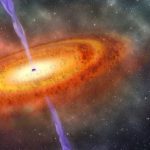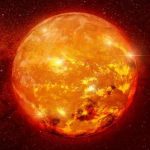 Crime
Crime  Crime
Crime  Technology
Technology 10 Hilariously Over-Engineered Solutions to Simple Problems
 Miscellaneous
Miscellaneous 10 Ironic News Stories Straight out of an Alanis Morissette Song
 Politics
Politics 10 Lesser-Known Far-Right Groups of the 21st Century
 History
History Ten Revealing Facts about Daily Domestic Life in the Old West
 Weird Stuff
Weird Stuff 10 Everyday Products Surprisingly Made by Inmates
 Movies and TV
Movies and TV 10 Actors Dragged out of Retirement for One Key Role
 Creepy
Creepy 10 Lesser-Known Shapeshifter Legends from Around the World
 Animals
Animals 10 Amazing Animal Tales from the Ancient World
 Gaming
Gaming 10 Game Characters Everyone Hated Playing
 Crime
Crime 10 Terrifying Serial Killers from Centuries Ago
 Technology
Technology 10 Hilariously Over-Engineered Solutions to Simple Problems
 Miscellaneous
Miscellaneous 10 Ironic News Stories Straight out of an Alanis Morissette Song
Who's Behind Listverse?

Jamie Frater
Head Editor
Jamie founded Listverse due to an insatiable desire to share fascinating, obscure, and bizarre facts. He has been a guest speaker on numerous national radio and television stations and is a five time published author.
More About Us Politics
Politics 10 Lesser-Known Far-Right Groups of the 21st Century
 History
History Ten Revealing Facts about Daily Domestic Life in the Old West
 Weird Stuff
Weird Stuff 10 Everyday Products Surprisingly Made by Inmates
 Movies and TV
Movies and TV 10 Actors Dragged out of Retirement for One Key Role
 Creepy
Creepy 10 Lesser-Known Shapeshifter Legends from Around the World
 Animals
Animals 10 Amazing Animal Tales from the Ancient World
 Gaming
Gaming 10 Game Characters Everyone Hated Playing
10 Astonishing Cosmic Events Expected in the Next 50 Years
The universe is constantly in motion, and the coming decades promise a series of celestial displays that will dazzle and awe. Whether you’re a seasoned astronomer or a casual stargazer, these phenomena provide a unique opportunity to witness the dynamics of our universe in real time. Each event, ranging from rare planetary alignments to breathtaking meteor showers, offers a unique glimpse into the workings of celestial mechanics. As these events unfold over the next fifty years, they invite us to look up and connect with the wonders of the cosmos.
Related: 10 Discoveries We Wouldn’t Have Without Space Travel
10 Planetary Alignment (2040)
Contrary to popular belief, a planetary alignment does not mean that the planets line up perfectly in space. Instead, they appear close together from our viewpoint on Earth, an event known as a “conjunction.” These alignments are a result of the planets orbiting the sun at varying speeds and distances, occasionally leading their paths to visually converge in our sky. Planetary alignments, while rare for more than two planets due to their different orbital planes, hold significant value both historically and scientifically.
Historically, these events were imbued with mythological and prophetic meanings, influencing cultures like the Mayans and Babylonians, who meticulously recorded such occurrences. Scientifically, alignments are useful for calibrating astronomical instruments and have been pivotal in space missions, such as NASA’s Voyager 2, which utilized a rare alignment to explore the outer solar system efficiently.
The last notable alignment happened in January 2024, involving Mars, Venus, and Mercury. Another will occur in 2040, with Mercury, Venus, Mars, Jupiter, and Saturn visible alongside a crescent moon. [1]
9 Super Blue Moon (2037)
A rare celestial event, a “super blue moon,” occurred on August 30-31, 2023. This event was a combination of a full moon, a supermoon, and a blue moon. A supermoon occurs when the moon is at or near its closest point to Earth in its elliptical orbit, causing it to appear larger and brighter in the sky. As a result, the moon can appear up to 14% larger than when it’s at its farthest point. Traditionally, a blue moon refers to the occurrence of two full moons within a single calendar month. This happens roughly every two to three years due to slight mismatches between the moon’s 29.5-day cycle and our calendar months. It’s important to note that a “blue moon” doesn’t mean that the moon turns blue. However, under certain atmospheric conditions involving smoke or dust, the moon can appear bluish due to light scattering.
While a super blue moon is a rare event, its size difference might not be easily noticeable to the casual observer—it’s similar to the size difference between a quarter and a nickel. Supermoons occur three to four times a year, constituting about 25% of all full moons. Blue moons, on the other hand, are much rarer, constituting only about 3% of full moons. So the unique timing that resulted in a super blue moon back in 2023 was quite rare, averaging once every ten years. The next projected occurrences are in January and March of 2037.[2]
8 Great Conjunction of Jupiter and Saturn (2040)
In December 2020, skywatchers witnessed a spectacular astronomical event known as the “Great Conjunction,” where Jupiter and Saturn appeared extremely close in the night sky. This occurrence last happened nearly 400 years ago and was visible at night almost 800 years ago. Often dubbed the “Christmas Star,” this event was visible in the evening sky, peaking on December 21st when the two giant planets seemed just a tenth of a degree apart. Viewers could cover both planets with their pinkie finger at arm’s length, illustrating the rarity and beauty of this celestial spectacle.
The phenomenon occurs as a result of the orbital paths of the planets aligning in such a way that, from our perspective on Earth, they appear very close together despite being hundreds of millions of miles apart in space. Such conjunctions are not rare in themselves, occurring approximately every 20 years due to the planets’ aligned orbits. However, the exceptionally close proximity of the planets in this conjunction made it a notable event.
On Earth, the conjunction coincided with the winter solstice, adding to the event’s allure. However, this timing was merely a coincidence. The next conjunction between Jupiter and Saturn will occur in November 2040, at which point they will be separated by an angle approximately the size of two full moons. The following occurrence of this minimal separation will be in March 2080.[3]
7 The Leonid Meteor Shower Peak (2031)
Historically, the Leonids have produced some of the most spectacular meteor storms, occurring every 33 years or so. Notably, the storms of 1966 and 1833 saw thousands, and sometimes over a hundred thousand meteors per hour, creating profound celestial displays. These meteor storms occur when Earth passes through particularly dense clouds of debris left by the comet.
Viewing the Leonid meteor shower can be an exhilarating experience, especially when observed from a dark location. The meteors appear to radiate from the constellation Leo, which is recognizable in the night sky by its distinctive backward question mark pattern, known as “The Sickle.” Viewers are advised not to look directly at Leo but to scan the surrounding sky to catch sight of meteors with longer and more visible trails.
For optimal viewing, enthusiasts should find the darkest possible viewing spot and allow their eyes approximately 30 minutes to adjust to the dark, enhancing their ability to spot meteors. No special equipment is needed, as the meteors can be seen with the naked eye. The next Leonid meteor shower is set to light up the night skies from November 6 to November 30, 2031, with its peak activity around November 18.
At its height, around midnight MST, the meteor shower is expected to produce up to 15 meteors per hour under ideal dark sky conditions. Adding to the favorable conditions for the 2031 Leonids, the peak of the shower coincides with the new moon phase, ensuring minimal interference from moonlight.[4]
6 Perseid Meteor Shower Peak (August 2028)
The Perseid meteor shower, a summer favorite, is predicted to put on an exceptional display in 2028. Linked to Comet Swift-Tuttle, which was discovered in 1862, it’s been the recognized source of the Perseid meteors since the Italian astronomer Giovanni Schiaparelli identified the relationship in the 19th century.
Each year, from late July to August, Earth crosses through Swift-Tuttle’s debris, igniting the Perseids to streak the sky with bright flashes. In the early 1990s, a notable increase in activity was observed, corresponding with the comet’s close approach to the sun. This resulted in denser meteoroid clumps and a more dramatic shower. Despite this activity decreasing over time, a revival is anticipated in 2028 when Earth intersects with dense dust filaments that the comet released hundreds of years ago.
Esko Lyytinen, a Finnish astronomer, has predicted that in 2028, Earth will pass near debris from Comet Swift-Tuttle that dates back to 1479. This could potentially create a “meteor storm,” with over 1,000 meteors per hour, most visible in the United States around 1:30 a.m. EDT on August 12. The gravitational effects of Jupiter could further intensify the shower, potentially making it one of the most remarkable in recent history. However, moonlight could reduce visibility, as the moon will be near its last quarter.[5]
5 Full Moon on a Leap Day (2048)
A full moon occurring on Leap Day, February 29th—a date that only appears every four years to correct the alignment of the calendar year with the astronomical year—is quite rare. Because February 29 only occurs every 48 months, a full moon on this day is notably infrequent. In fact, a full moon on Friday the 13th is more likely to occur than one on February 29.
Historically, a full moon on Leap Day has only occurred a few times over several centuries: specifically, in the years 1504, 1600, 1752, 1820, and more recently in 1972. According to Dan Joyce, an astronomer at Triton College’s Cernan Earth and Space Center, the probability of a full moon falling on any given date is about twice in a 59-year period. However, because February 29 only occurs once every four years, this frequency reduces to about two occurrences every 236 years.
Looking ahead, the next full moon on February 29 is expected in 2048, followed by occurrences in 2124 and then 2268. These estimates are based on long-term observations, which consider the interaction between the lunar cycle, where a full moon occurs approximately every 29.5 days, and the irregular occurrence of February 29 in the Gregorian calendar.[6]
4 Total Solar Eclipse (August 12, 2045)
The upcoming 2045 total solar eclipse, known as the “Greatest American Eclipse,” will offer an extraordinary spectacle with a record totality duration of 6 minutes and 4 seconds. Scheduled for August 12, 2045, this eclipse will traverse 12 U.S. states, starting from Florida and covering significant portions of the country, including California, Nevada, Utah, and Colorado, among others, before continuing through sections of Central and South America.
This event provides a unique opportunity for both avid eclipse watchers and the general public, as its path includes numerous accessible locations, major cities like Reno, Salt Lake City, Colorado Springs, and Miami, as well as iconic landmarks such as Disney World in Orlando and Kennedy Space Center in Florida. The path of totality will be remarkably wide, averaging 318 miles (511.7 kilometers), presenting diverse viewing spots from Mount Shasta in California to Port Saint Lucie in Florida, where the longest U.S. totality duration will be visible.
Interestingly, the 2045 totality path will intersect with the totality path from the April 8, 2024, eclipse in Arkansas and Oklahoma. This intersection is uncommon, considering the average recurrence of a total solar eclipse in the same location is approximately once every 366 years, making this a must-see event.[7]
3 Halley’s Comet Return (2061)
Halley’s Comet, the most famous comet, has embarked on its lengthy journey back toward Earth. On December 8, 2023, the comet reached its aphelion, the point in its orbit furthest from the sun, located 3.27 billion miles (5.26 billion kilometers) away. This marks the comet’s first move back toward the sun since 1986, a journey that will take it through the orbits of several planets before reaching Earth in 2061.
The comet’s orbit is an elongated ellipse, which makes it speed up as it nears the sun and slow down as it moves away. As of December 8, 2023, it has begun to gradually speed up. The next significant event will be in 2041 when it crosses Neptune’s path. Afterward, Halley will continue its journey toward the Sun, crossing the orbits of Uranus, Saturn, and Jupiter before returning to Earth.
In 2061, when Halley’s Comet next reaches perihelion, the point in its orbit where it is closest to the Sun, it is set to be an extraordinary spectacle. Its approach will favor observers in the Northern Hemisphere during late spring and early summer. The comet is expected to be much brighter than during its last visit in 1986, potentially becoming a dazzling object in the northern summer evening sky. However, the view of Halley’s Comet in 2061 may be affected by light pollution, a growing issue that threatens our ability to observe celestial events.[8]
2 Saturn’s Rings Will “Disappear” (2025)
In 2025, Saturn’s famous rings will appear to “disappear” due to the planet’s shifting tilt as it orbits the Sun. Saturn completes one orbit around the Sun every 29.4 Earth years, and each day on Saturn lasts approximately 10.7 Earth hours. Over millions of years, Saturn’s rings are slowly being pulled into its atmosphere. However, the upcoming “disappearance” is temporary and merely an effect of perspective.
In 2025, Saturn’s rings will align edge-on with Earth, rendering them nearly undetectable from our viewpoint, similar to spotting the edge of a thin sheet of paper from a significant distance. This alignment, while making the rings seemingly vanish, provides a special opportunity to observe some of Saturn’s many moons more distinctly.
NASA predicts that by 2032, the orientation of Saturn and its rings will adjust, presenting a stunning view of the rings’ underside. These changes take place approximately every 15 years. The cycle of the rings disappearing and reappearing will persist, with “favorable ring plane crossings,” as NASA calls them, scheduled for 2038 and 2039. During these years, Saturn will appear even more ringless. This fascinating celestial event underscores the dynamism of Saturn’s moons, which are thought to cause the shifts in Saturn’s tilt.[9]
1 Transit of Mercury (November 13, 2032)
The next Mercury transit, an extraordinary astronomical event where the planet Mercury passes directly between the Earth and the Sun, will not occur until November 13, 2032. This occasion is relatively rare, which adds to its unique appeal and intrigue. The rarity can be attributed to the fact that both Mercury and Venus orbit the Sun on a plane slightly tilted relative to Earth’s orbit. Transits of Mercury are infrequent, occurring about 13 to 14 times per century, making each event a notable moment for astronomers and enthusiasts alike.
During the captivating spectacle of a Mercury transit, the planet can be seen as a tiny dot moving methodically across the Sun’s disk. This provides a rare opportunity to observe Mercury in motion against the backdrop of the Sun. The most recent transit took place on November 11, 2019. This event was captured in stunning detail by NASA’s Solar Dynamics Observatory in various wavelengths.
However, it’s worth noting that neither the transit in 2032 nor the subsequent one, due to happen in 2039, will be visible from North America. This means North American observers will have to wait even longer, until 2049, to witness this astounding phenomenon from anywhere across the country. Those on the West Coast of the continent will have an even further delay, with visibility not expected until 2052.[10]








